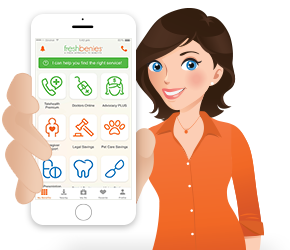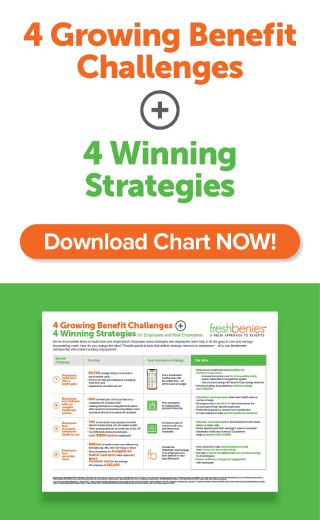VISION INSURANCE: 4 THINGS TO "LOOK AT"
“It's all fun and games until someone loses an eye!” You probably heard this from your mom when you were a kid. Do you find yourself repeating this rich tradition with your kids? The last thing on your mind at the time was probably vision insurance.
It’s open enrollment time for many employees and vision benefits might be one of your choices. Let’s be honest: most of us would rather poke our eye with a stick than go through the selection process!
Remain calm…there’s no need for that! Instead, here’s 4 questions to ask yourself to make it easier to choose a plan of action for your fam:
1. What’s included in a typical vision insurance plan?
Review your offering, but these are typical:
- An eye exam – partial or 100% paid for.
- Glasses – a pair every year (or every 2 years) or there’s a pool of money you can spend.
- Contacts – usually a pool of money you can spend.
Major eye issues, surgery, disease aren’t covered in a vision insurance plan – these would fall under medical insurance. And, there is a maximum payout in every vision plan, so know what that is. Finally, be sure to look at the coverage – will insurance pay for those expensive designer frames? In the end, getting your money out of a vision insurance plan requires that you have a yearly exam and use glasses/contacts.
2. What are my family’s vision needs in a year?
Look at everyone in your family (pun intended!). How many get an annual eye exam? How many wear glasses or contacts? Any divas that consider designer frames a must-have (“or I’ll just die, mom”)? How many may start to need eyewear this year? Is anyone planning LASIK surgery?
Now, add up your family’s expected costs and compare that to the annual cost of the insurance and the insurance payout. Is your payout worth the cost of the insurance?
Let’s assume a typical vision insurance plan costs about $10-$35/month for your family and an eye exam is around $100. If annual eye exams are all you need, you don’t need to pay for insurance.
If you’re considering LASIK, recognize most insurance plans don’t cover it. But you should be able to get the cost cut almost in half with a vision savings plan (which might be your best approach). And getting surgery would take away your need for new glasses – so the need for insurance might go away.
Under Obamacare (the Affordable Care Act), most health insurance plans will include some amount of vision coverage for kids under the age of 19. So, if you're buying a vision plan for your family, you'll probably only need it for mom and dad.
3. What are my options?
- Employers used to pay for vision insurance plans for employees and their families. Today, less than 20% do.
- If you’re not in this lucky group, you probably have the option to purchase a vision insurance plan through your employer (cost range is approximately $6 - $25/month).
- If your employer doesn’t offer it, you could choose to buy an individual vision insurance plan. Unlike buying through an employer where the risk is spread across many, the only people who purchase these plans are heavy vision users. As a result, these insurance plans cost more and/or don’t cover as much (cost range is approximately $15 - $35/month).
- If you have some vision expenses, but insurance isn’t a great value for your family, consider a good vision savings benefit. While exams and product aren’t “covered,” a vision savings means you don’t have to pay full retail price. These are relatively inexpensive (cost range is approximately $5 - $15/month). It could save you a few dollars on an annual exam with much bigger savings on contacts and glasses. A tip for finding a good vision savings: make sure there are providers near you (LensCrafters, Eyemasters, Pearle, JCPenney, Target, etc.) and look for an average discount of 30% or better on eyewear.
4. What’s the worst-case scenario?
Remember, we buy insurance for unpredictable high-risk situations. Eyewear isn’t very unpredictable. And the biggest value you get out of vision insurance is probably a few hundred dollars (more with a whole family). While it’s something, it’s not an unbearable cost – considering you’ll spend hundreds of dollars each year for the insurance.
Bottom line: compare the insurance premium costs to your family’s expected vision needs and ask “is the benefit worth the cost and risk for my family?” If the insurance doesn’t appear to be a good value, it probably isn’t.
If you want more help evaluating vision insurance, talk to your Benefits Department, insurance broker, or feel free to contact me at helpme@freshbenies.com!
















